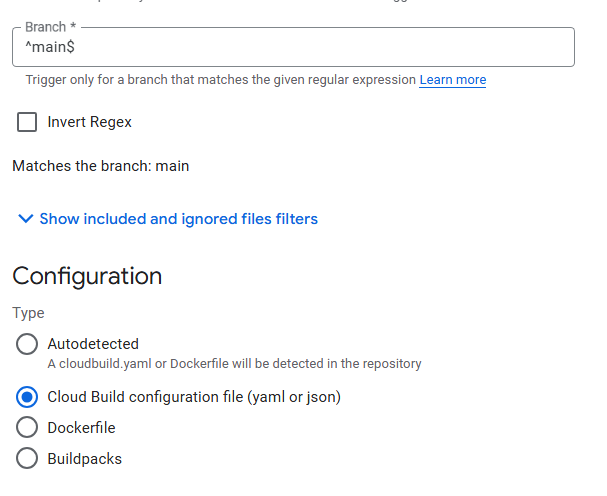Devlog: TypeScript, JavaScript, Server Costs
9/23/2025
I saved money going from TypeScript to JavaScript.
But you should still use TypeScript 100% of the time. The type safety alone makes it way more scalable and easy to work with in large applications.
So what do I mean? My startup, Freebites, is currently hosted on GCP, and like all backend service providers, it costs money to maintain server costs.

Currently, I have to allocate 1GB of memory to the backend, which comes out to about $10 a month. It doesn’t seem like much, but that adds up to $120 a year, which makes me rethink all of my subscriptions now that I think about it…
Anyway, my point is:
Reduce Memory Usage —> Reduce Cost $$
Was this possible? Well a quick local deployment on Docker showed that my normal idle server usage was about 500MB.

Well then, why not just set your instance to use 500MB? Well I tried, and it started crashing occasionally, and I’m guessing that’s because there are some instances where the memory usages spikes a little bit, so I get it 1GB for “wiggle room,” because crashing in production is a big no-no.
Usually, optimization is kind of hard, but luckily, I wrote this backend two years ago as a junior in college, having no idea about backends and profiling and how to deploy things properly. I still have so much to learn, but at least I’m taking steps in the right direction.
What can be optimized?
There are a few things:
- deploy only the backend on Cloud Run (I know, this is logical but hear me out)
- switch over to JavaScript
Deploying the right things
Firstly, my backend and frontend are in the same project (which is fine as long as you set things up okay), but I was sending both the frontend and the backend to Cloud Run to be deployed.
Just having them both there means more lines of code sitting in there, which is was am issue, and something I knew when setting it up, but I could not figure out for the life of me how to isolate it by only sending the backend to Cloud Run.
It wasn’t until I worked a bit more with the .yaml configuration I had in Cloud Run to do some other stuff that I found one of our build steps, which looked like this:
- >-
docker build --no-cache --build-arg -t
$_AR_HOSTNAME/$PROJECT_ID/cloud-run-source-deploy/$_REPO_NAME/$_SERVICE_NAME:$COMMIT_SHA
-f Dockerfile .If you notice the Dockerfile path, the Dockerfile was in the root, and the next . which is the build context is in the root of the project. This was where I had to set up the build context to point to my backend/ folder, to something like:
- >-
docker build --no-cache --build-arg -t
$_AR_HOSTNAME/$PROJECT_ID/cloud-run-source-deploy/$_REPO_NAME/$_SERVICE_NAME:$COMMIT_SHA
-f backend/Dockerfile backendWe’d have to move the location of the Dockerfile accordingly, as well.
Small note:
I did mention that it was okay to have everything in one repo. It has some pros:
- Shared models, types, utils
- Easier to manage and iterate quickly for a small team
- Local development is a lot easier here
The one caveat is that you’ll want to have a maintain a clear separation of concerns, or else this kind of build context is not possible. A quick couple of things to watch out for:
- keep frontend packages on the frontend, backend packages on the backend. A good way to check is that you should be able to cd into your backend (so you can’t see anything), start it up in Docker and have it work
- fundamental habit, but all API calls should route through to your backend (don’t call external APIs directly from the front end)
- eventually, shared npm packages might be the way, which I’ve already had to set up as our website is on a different repo.
Okay, TypeScript and JavaScript…
Note that TypeScript compiles in JavaScript anyway, so they’ll actually have the same performance. But the thing is, we weren’t doing that in the backend.
We use node.js, which natively is a JavaScript thing. But we used ts-node, which looks like this:
"cloud-server": "cross-env APP_ENV=production ts-node backend/server.ts"But the issue with ts-node, while it’s great, is that we actually kept all the TypeScript tooling and stuff (because we didn’t know any better) with ts-node , etc as well as loading a few unneeded devDependencies that weren’t going to be used in production anyway.
We left it in so we can actually get the app released, but we didn’t know how much that actually increased performance.
So we now precompile everything into the dist/ file with a simple tsc script, which was straightforward, but our tsconfig wasn’t strict enough, meaning over the year where we were developing, we had about 500 TypeScript errors to fix first. Yay!
Anyway, once this got squared away, the Dockerfile was moved, we had almost a 6x decrease in memory usage, from 492MB down to 75MB. This means that I’ll be able to allocate less memory, down to 500MB and perhaps even 250 MB, which will bring down our costs to just $30/year.
This means that I’ll be able to allocate less memory, down to 500MB and perhaps even 250 MB, which will bring down our costs to just $30/year.
Obviously as people start using it, usage will go up again, but in the meantime, this adds up. To $90 saved/year, which we can put towards other services to make the Freebites experience better.